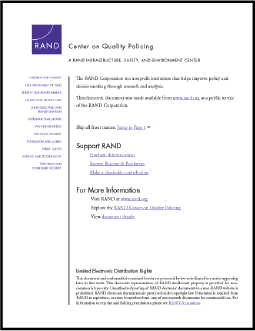
Historically, police agencies have measured their performance against a very restricted set of crime-focused indicators, such as crime rates, arrests, and response times. However, modern police officers must be prepared to take on a wide variety of roles, from problem-solver to counselor and provider of first aid, among many others. Therefore, performance measures should be multidimensional to capture the complexity inherent in modern policing. In this era of tight budgets and deep cuts in municipal services, local officials have prioritized police performance improvement and the collection of measurable evidence to justify budget requests. Police departments also benefit from measuring performance; the results can help officials monitor department operations, promote adherence to policies and strategic plans, and detect patterns of bias or misconduct. By defining what is measured, executives send a signal to their command about what activities are valued and what results are considered important. Performance measures can also help track the progress of individual officers, the efficient use of funds, and many other indicators of organizational health. This report describes some of the key considerations involved in designing measures to evaluate law enforcement agencies. It also includes a framework for measuring performance and a detailed review of some international best practices.
